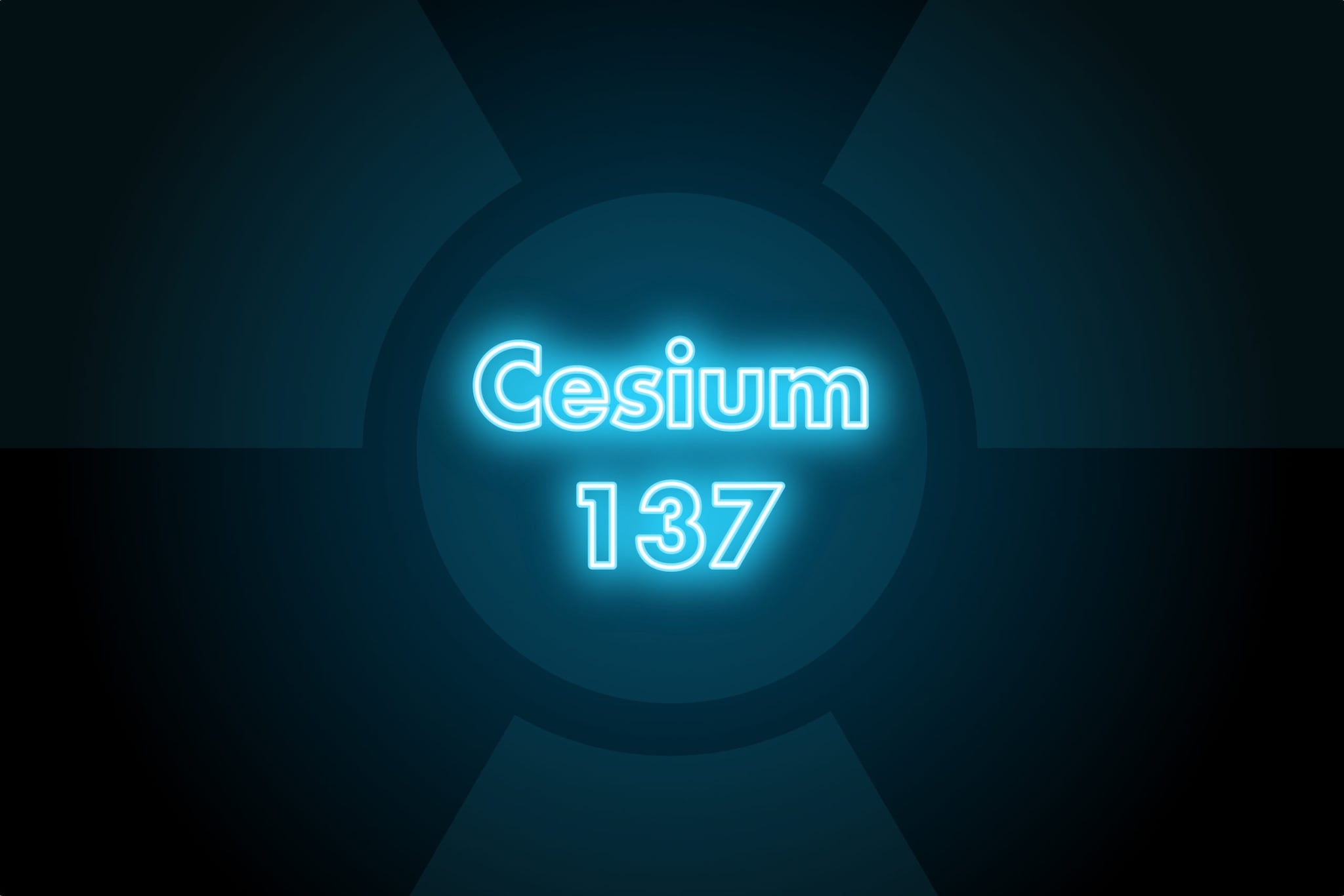At a glance
Cesium-137 (Cs-137) is produced by nuclear fission for use in medical devices and gauges. It can cause burns, acute radiation sickness, and even death.

Cesium-137 properties
Half-life: 30.17 years
Mode of decay: Beta and gamma radiation
Chemical properties: Liquid at room temperature, but readily bonds with chlorides to form a powder.
Appearance: Small amounts of Cs-137 are incorporated into Lucite disks, rods, and seeds. Larger Cs-137 sources are enclosed in lead containers (such as long tubes that are closed at each end) or small round metal containers. If the lead containers of Cs-137 are opened, the substance inside looks like a white powder and may glow. Cs-137 from nuclear accidents or atomic bomb explosions cannot be seen and will be present in dust and debris from fallout.
Use
Cs-137 is used in small amounts for calibration of radiation-detection equipment, such as Geiger-Mueller counters.
In larger amounts, Cs-137 is used in
- Medical radiation therapy devices for treating cancer
- Medical sterilization
- Industrial gauges that detect the flow of liquid through pipes
- Other industrial devices to measure the thickness of materials, such as paper, photographic film, or sheets of metal
Origin
Cs-137 is produced by nuclear fission for use in medical devices and gauges. Cs-137 also is one of the byproducts of nuclear fission processes in nuclear reactors and nuclear weapons testing. Small quantities of Cs-137 can be found in the environment from nuclear weapons tests that occurred in the 1950s and 1960s. It can also be found in nuclear reactor accidents, such as the Chernobyl power plant accident in 1986, which distributed Cs-137 to many countries in Europe.
Form
Because it readily bonds with chlorides, Cs-137 usually occurs as a crystalline powder, rather than in its pure liquid form.
Exposure
People are exposed to some Cs-137 every day, because amounts of Cs-137 are present in the environment from weapons testing in the 1950s and 1960s. However, Cs-137 is dangerous in the large, concentrated amounts found in radiation therapy units and industrial gauges. The sources in these devices are designed to remain sealed and keep people from being exposed. If these canisters are intentionally or accidentally opened, the Cs-137 inside could be dispersed.
Risks
External exposure to large amounts of Cs-137 can cause burns, acute radiation sickness, and even death. Exposure to Cs-137 can increase the risk for cancer because of exposure to high-energy gamma radiation. Internal exposure to Cs-137, through ingestion or inhalation, allows the radioactive material to be distributed in the soft tissues, especially muscle tissue, exposing these tissues to the beta particles and gamma radiation and increasing cancer risk.
More information
- Frequently Asked Questions (FAQs) About a Radiation Emergency
- What to Do in Radiation Emergencies
- About Prussian blue
- Radiation Dictionary
- Public Health Statement for Cesium (Agency for Toxic Substances and Disease Registry)
- Cs-137 Basics (Environmental Protection Agency)
